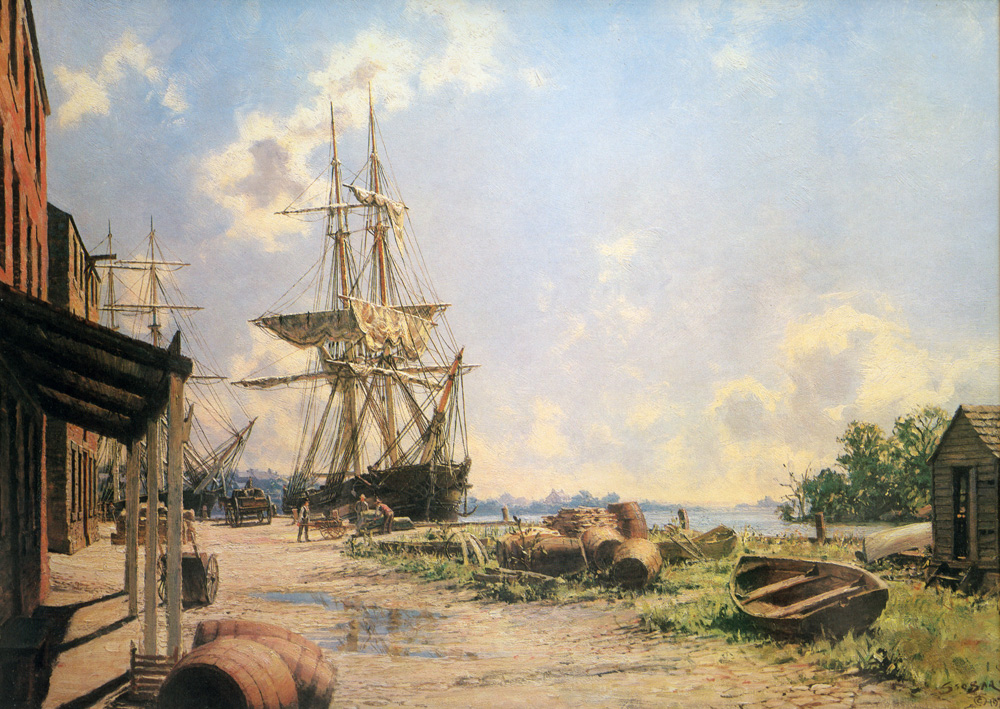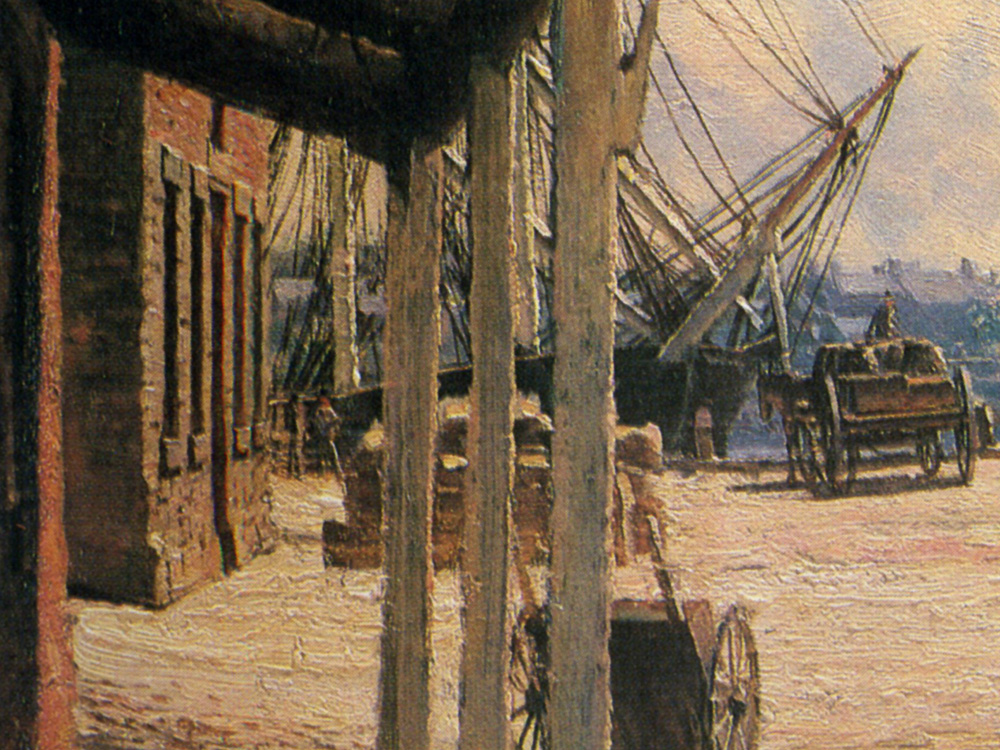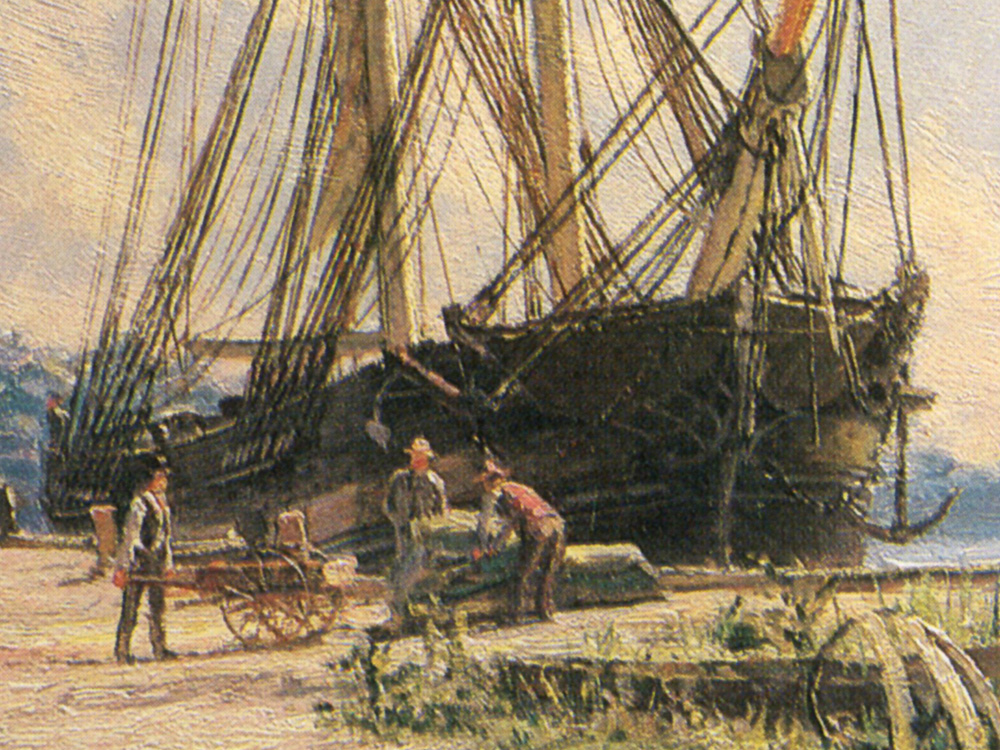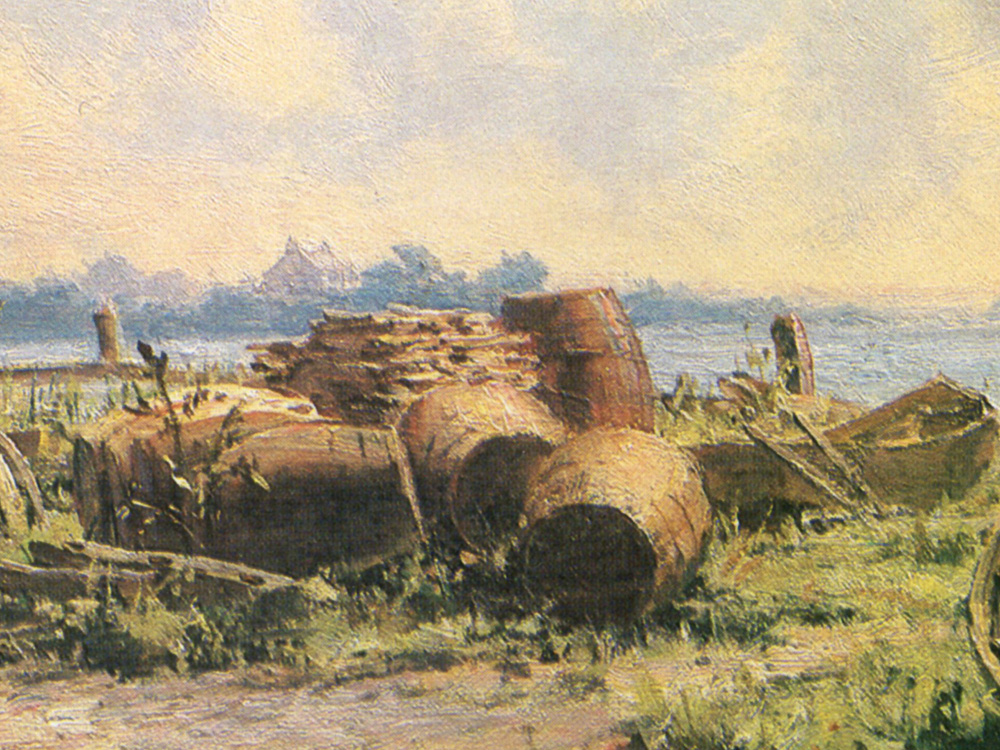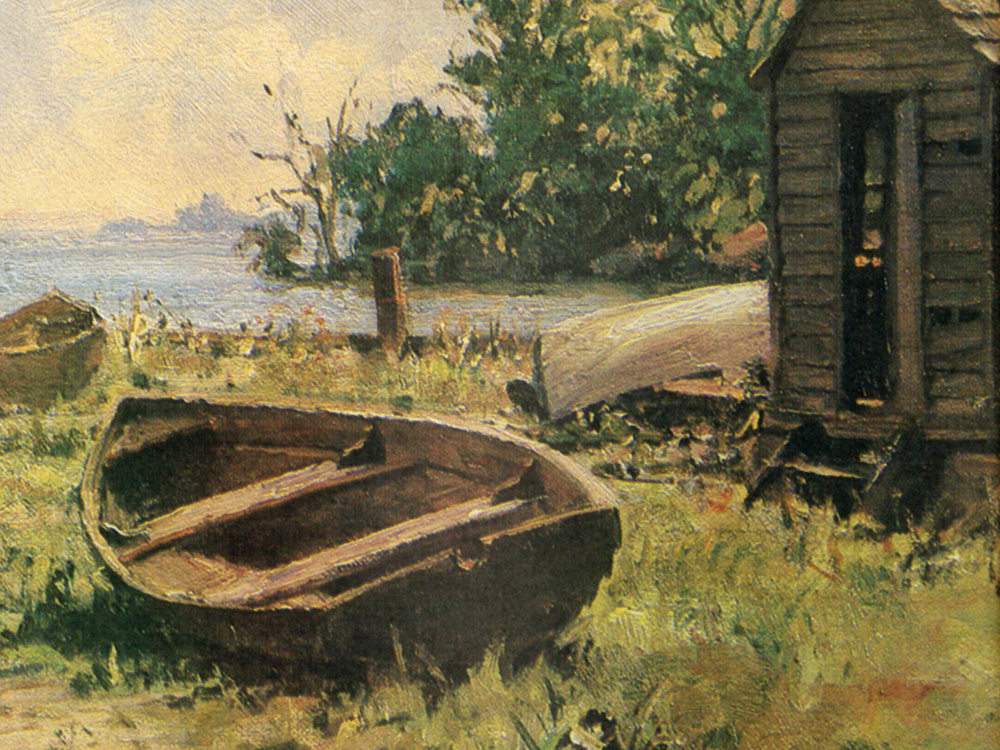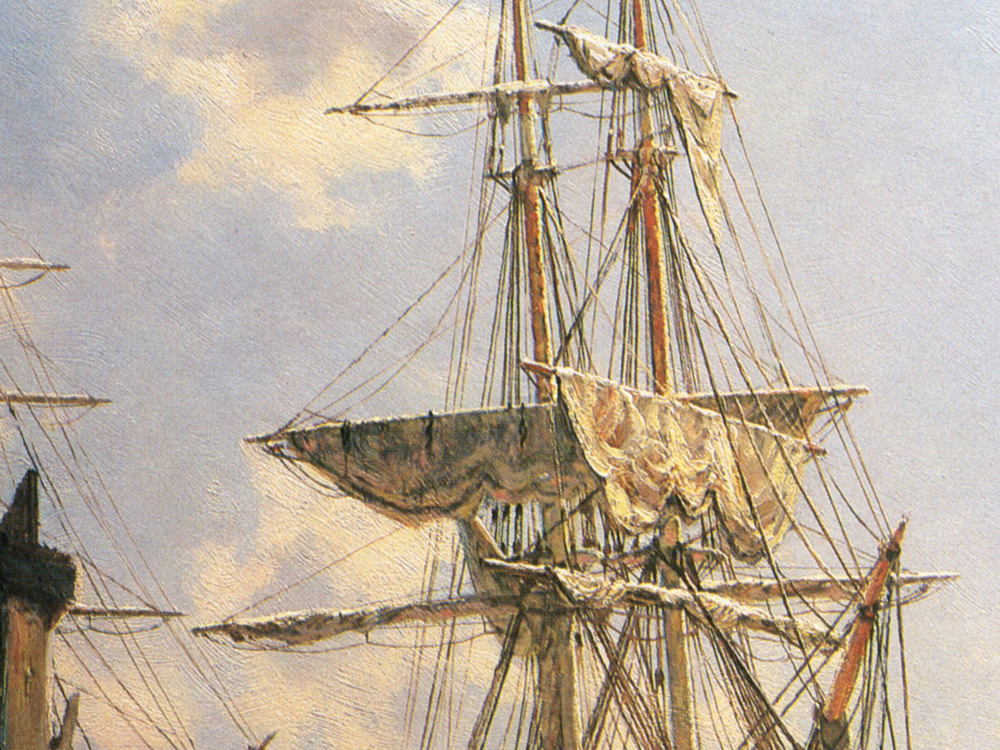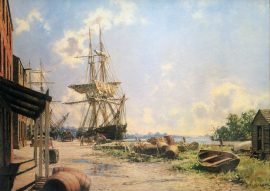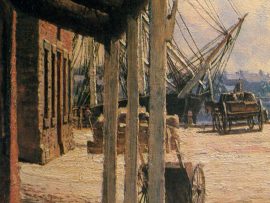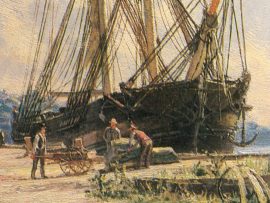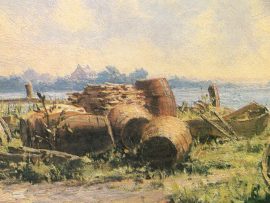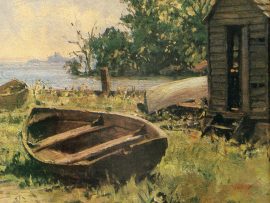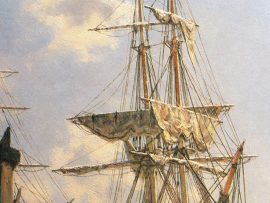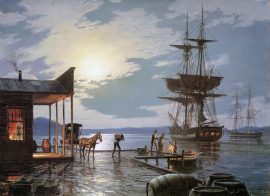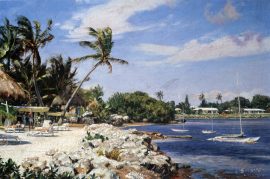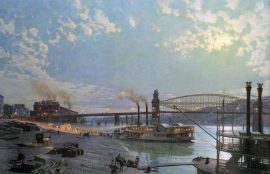Georgetown: Vessels at the Potomac Wharf in 1842
$1,200.00
The present location of Georgetown is close to that of an ancient Indian fishing site. A trading post was established in 1703 on Rock Creek at the point where it entered the Potomac River. Back in those days, Rock Creek was navigable for quite a distance above the present P Street Bridge. The creek at its junction with the Potomac formed a good-sized bay and its mouth extended from Littlefield’s Wharf to High Street (later 32nd Street).
In 1711, when the Swiss explorer Baron Christopher de Graffenried was searching for a location to build shelters for German miners who were immigrating into the colony, he became quite interested in Georgetown. He considered the Potomac to be deep enough for the controlling drafts of sailing vessels.
Gradually Georgetown became the largest tobacco-shipping center of the eighteenth century, and by the end of the century shipments of flour and grain out of the port nearly equaled the tobacco export. The whiter, softer wheats, which were shipped out in cotton sacks and wooden barrels, were particularly favored by the American and British navies: business was brisk.
Georgetown reached its zenith in value of exports in 1792-1793, just after the town was incorporated in the new territory (later the District) of Columbia. Much of this trade was coastal, as foreign exports were beginning to shift to the open port of Alexandria. Vessels were needed, however, to service the thriving wholesale grocers, chandlers, and fishing industries all crowded together along the early Georgetown waterfront.
Around the time depicted in the painting, milling had become a dominant force on the waterfront, and the shipment of tobacco was declining rapidly. Georgetown’s port activities dwindled gradually in the latter part of the nineteenth century; today the waterfront’s purpose seems to be mostly that of channeling the heavy flow of traffic in and out of Virginia and Washington. What was once a flourishing center for one method of transportation has become a conduit for another means of travel.
| Weight | 6.00 lbs |
|---|---|
| Catalog: | Stobart-057 |
| Artist: | John Stobart |
| Dimensions: | 18" x 27" |
| Edition: | 750 |

